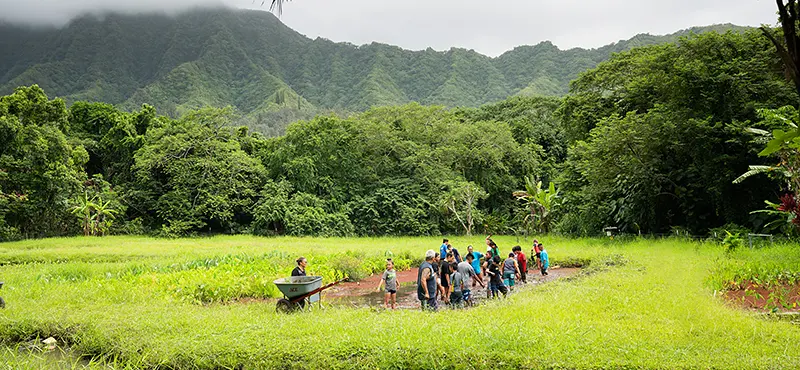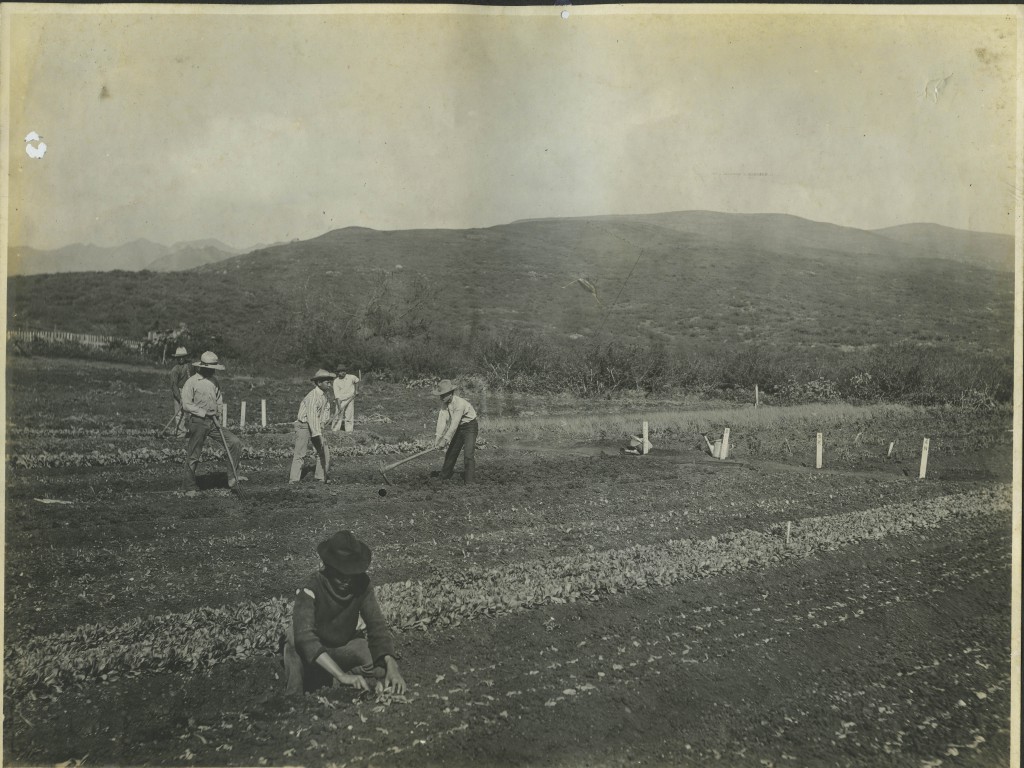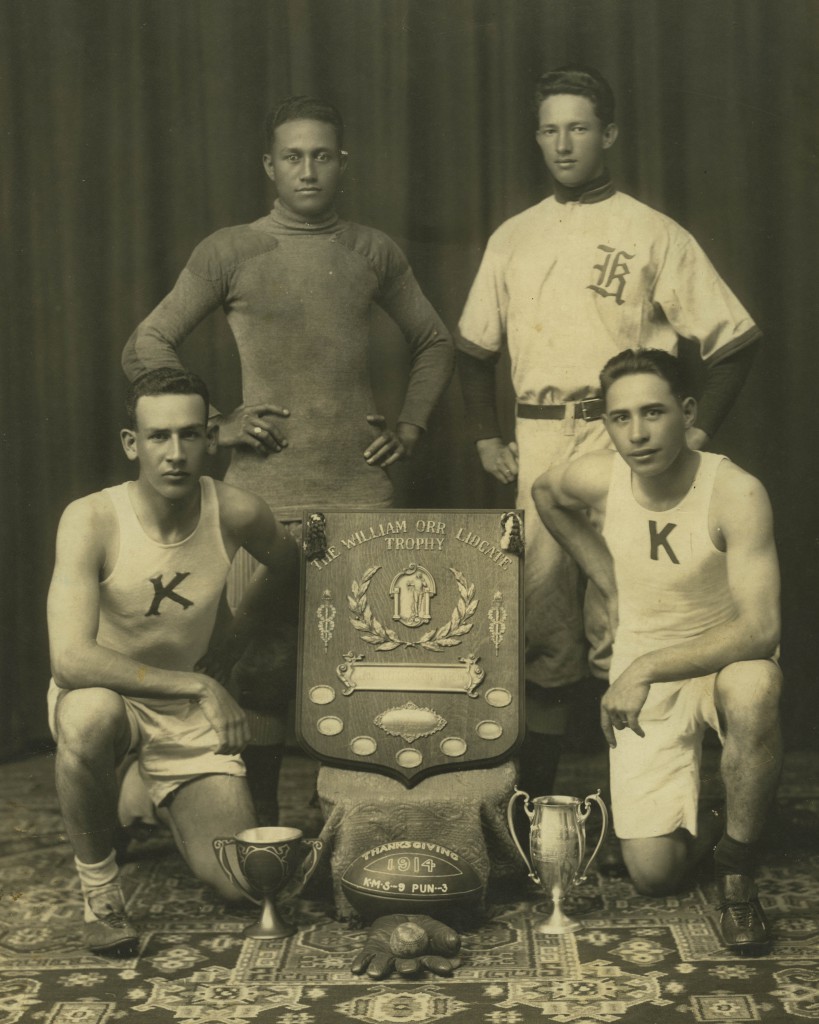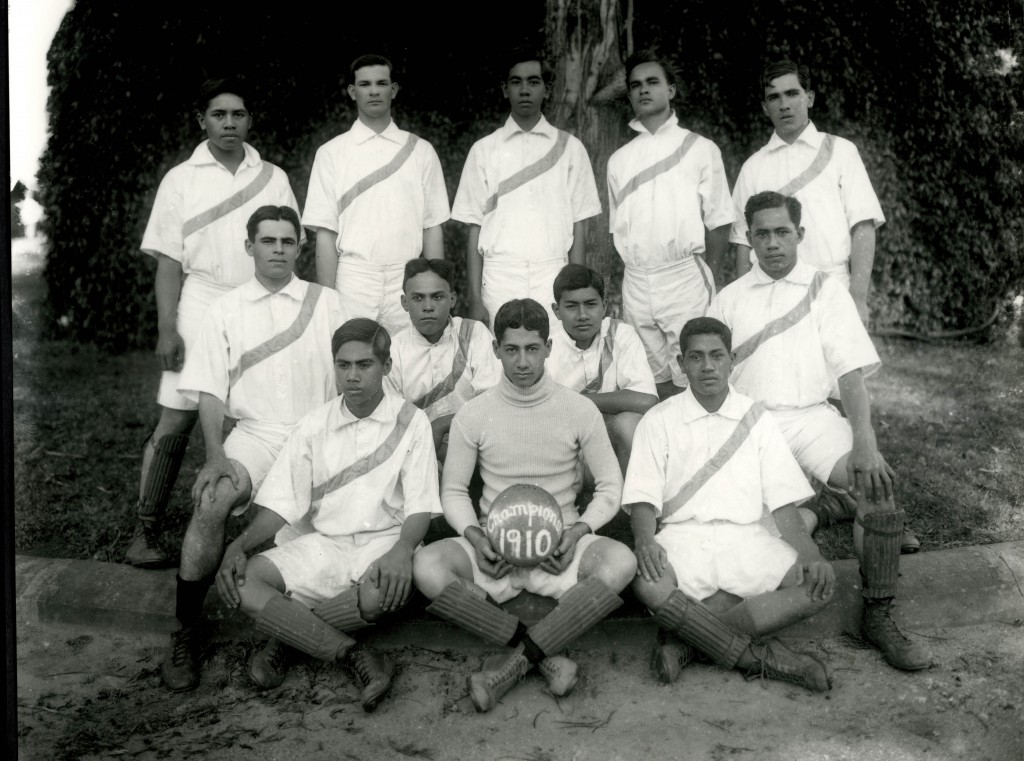Timelines
1900 to 1914 the schools consolidate
1900
Charles Bartlett Dyke becomes the principal of a consolidated Kamehameha Schools. All three branches, Boy’s, Girl’s, and Preparatory Departments are together under one administrative head.
1901
Under Frederick G. Krauss, the agriculture department at Kamehameha gained greater importance, and he made agriculture one of the strongest departments in the school. In 1903 the Land Commissioner, with the consent of Governor Dole set aside 250 acres of land on Oahu for graduates of Kamehameha Schools with qualifications in diversified farming. The land was at Pupukea, but the program was not eminently successful.
August 19, 1904
The office of Kamehameha Schools President is created. PERLEY HORNE is selected the first. Mr. Horne notices two things, one is that very few graduates are engaging in agriculture–only 11 out of 303 graduates–and the second is that there is a particular problem of training the Hawaiian young people in the use of proper English. Mr. Horne advocates for the increased use of the library, as well as declaration contests and debating teams. Within 4 or 5 years of Horne becoming president, academic work became subordinate to manual work and there were well-equipped shops for carpentry, blacksmithing, machine work, printing and electricity.
It was during this time that the 3 week January vacation was discontinued which greatly enhanced attendance during the second semester.
December 19, 1907
FOUNDER’S DAY-The 20th Anniversary of the Kamehameha School for Boys. Reverend William B. Oleson and his wife are present. The alumni have raised funds among themselves to defray the expense of the Oleson’s trip from the continent to Hawaii, where Rev. Oleson delivers a stirring address at an impressive and well-attended Founder’s day ceremony:
“For twenty years our youth have had a training that has justified itself in the results. Work has been treated as an honorable and necessary thing. Self-mastery in work-shop and class-room has been the constant goal. Constantly widening opportunities have been afforded here for the development of aptitude, and that always in the direction of ability to earn a living. And this training has not been in vain. There are men and women all over these islands today who are living industrious and useful lives for which they gained the incentive and preparation here.”
The new Manual Department shop building is also dedicated that day.
ATHLETICS IN THE 1900s
“Our boys were engaged in all kinds of athletics from the 50 yard dash to the Marathon race; from basketball to football; from catching greased pigs and climbing greased poles to throwing the discus; from pole vaulting to racing on stilts fifteen feet tall. Our trophies show that Hawaiian boys can and do win more than 50%. And when they lose, it is often because Hawaiian boys, trained here, have joined opposing teams. Hawaiian boys have the physical strength, the endurance and the nerve. All they need is systematic training” (Uldrick Thomson).
December 19, 1912
Founder’s day and the dedication of the new senior home management cottage for the School for Girls. The Senior Hall was a place where the girls would learn by doing. It was a model for homemakers of the future. Each member would spend some time during the year to buy, order, cook and serve food; become acquainted with food values, and plan simple menus that were wholesome and nourishing. Gentle speech and manners, respect for property and the rights of others, general housework, and the striving for ideals in all that relates to a home, was the hope for the girls.
1914 The 20th Anniversary of the Girl’s School
This year marked the end of an era at Kamehameha. All annuitants named in Bernice Pauahi Bishops will had passed and all subsidiary bequests had been discharged, the final accounts of the executors were accepted by the Circuit Court in probate, the executors were discharged and their bond cancelled. President Horne resigned after ten years of constructive service to the schools, but more importantly, it was soon followed by the death of Miss Ida Mae Pope on July 14, 1914, and brought to a close her 20 years with the Girl’s School since 1894. “She gave herself to the cause of mothering Hawaiian girls, so many of whom had no real mothers. In this service she never spared herself and to it she sacrificed her life.” (L.C. Hudson)
“The death of Miss Pope is an irretrievable loss to the Kamehameha Schools and to the Hawaiian race.” –Albert F. Judd.





















